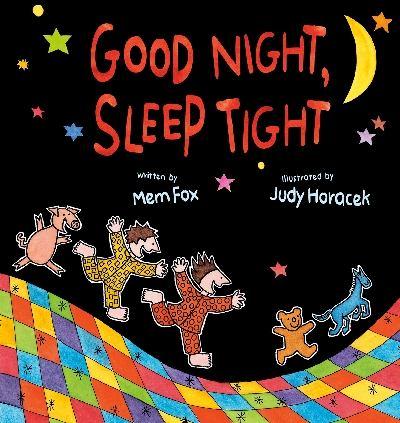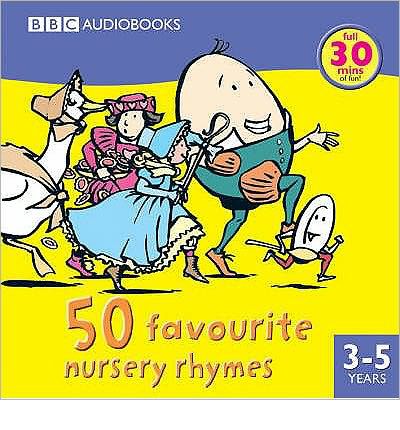“Pussycat pussy cat, where have you been?”
“I’ve been to London to visit the Queen.”
“Pussycat pussycat, what did you there?”
“I frightened a little mouse under her chair”
Nursery Rhymes often seem nonsense little things, short and silly and sometimes a little bit disturbing. And they seem to be going out of fashion – a lot of early years teachers report that many children don’t know any of the nursery rhymes which would have been universally known when we were children. Yet nursery rhymes are vital to reading development!
Nursery Rhymes introduce new words and ideas to children and show how words can sound the same but have different meanings. They introduce ideas like alliteration and rhyme as well as rhythm and patterns. Think of the simple rhyme Jack and Jill:
Jack and Jill went up the hill
To fetch a pail of water
Jack fell down and broke his crown
And Jill came tumbling after
Within four lines there are four ‘rarer’ words which children may not come across in their day to day interactions (I even remember asking what crown meant as a child). There’s alliteration (Jack and Jill), rhymes (Jill and hill, down and crown, water and after – it’s actually a pretty complex rhyme structure), there’s rhythm and patterns (think about where you pause when you say or sing it) and even the mathematical ideas of up and down (there’s probably a safety message in there too, as well as a discussion about why people might need to fetch that pail in the first place instead of just turning on a tap)Four lines, much more complex than you’d ever think when you first looked at it!
On top of that nursery rhymes allow you to create a safe bond with your child, especially those rhymes with actions and gentle touch.
While it’s easy to dictate ‘teach your children nursery rhymes’ the reality is that life is busy and it can be hard enough to fit in that all important story without thinking about fitting in nursery rhymes on top of that. Plus you’ve got to learn them again!
Never fear – here’s some easy ways to share nursery rhymes with your child!
Six Ways to Spend More Time With Nursery Rhymes

1. Check out your local library
Most libraries have some form of rhyme program for babies and toddlers, although they come under a million names. Ask your local library what they do and if they don’t have anything, ask if it’s possible to start one. These rhyme times are great since they usually mix spoken and sung rhymes, sometimes have the words to help you jog your memory and usually have actions to go with the rhymes. If you can, try a few different libraries – they all seem to do it differently!
2. Look for nursery rhymes in books
Mem Fox’s Good Night, Sleep Tight has seven nursery rhymes through it, but there are also plenty of other books which contain nursery rhymes. You could try reading one each day with your child or you could read the whole lot all at once!

3. Listen out for nursery rhymes
I found an awesome nursery rhyme audio book at Audible.com – great for longer journeys. A quick search of audiobooks or CDs would be sure to come up with plenty of nursery rhymes to listen to.
4. Make your own nursery rhyme book
Grab a nice notebook and create your own book – a great way to record those long lost nursery rhymes when you hear them again. It also becomes something special for your children
5. Make up your own versions of the rhymes
You know the rhyme: Mary, Mary Quite Contrary? Well here’s the version I say to Squirm:
Squirm, Squirm, Quite Contrary
How does your garden grow?
With beautiful plants and shiny black ants
And pretty birds all in a row
(Obviously, I use his actual name there). We tend to say the two together – first Mary, Mary, then Squirm, Squirm. We do the same thing with Pat-a-Cake, putting different letters and names in.
6. Sneaky rhyme time
When I was teaching we talked about sneaky reading – where you sneak in a few moments of reading wherever you can. We became masters of finding reading time when we were waiting for assembly to begin! Rhyme time with your child can be the same – you can sneak a rhyme in whenever you can, you don’t need to wait for a certain time of the day. Squirm and I often share rhymes when I’m changing him and drying him after his bath. We’ve also shared rhymes when we wait at the doctors or when we’re waiting in lines at the shops. Any time can be rhyme time!
What’s your favourite nursery rhyme? How do you share them with your children?


I hav always sung Incy Wincy Spider when I have changed nappies….not sure why, it has just something that I started doing! I find both my kids if upset, if I sing that to them it makes them calmer. They can go from being a blubbering mess to smiling and clapping along. 🙂
Squirm’s the same when he’s being changed. And I find that I’m running themes from one rhyme to the next – Baa Baa Black Sheep, through sheep to Mary Had a Little Lamb through Mary to Mary, Mary Quite Contrary, and then to Little Miss Muffet just for fun 🙂
I love nursery rhymes and know them all, but the. My younger brothers dont know any and are only learning them now eh have kids – they wouldn’t sit and be read to long enough like I did 🙂 great ideas!
Our Kindergarten teachers last year focused on Nursery Rhymes, I thought that was a fantastic idea and hope they do it again this year when my #3 son starts.
I like your tips, especially including the childs name in the Rhyme.
#teamIBOT
We’re constantly rewriting all sorts of songs for Squirm 🙂 I think it started when I was being induced and we sang ‘I like big babies and I cannot lie . . . “
I need to learn a few more nursery rhymes… my repertoire consists of Itsy Bitsy, twinkle twinkle and baa baa black sheep!
The BBC Audio book that I posted about is great for introducing new rhymes and ones you may have forgotten – I found myself remembering so many when I listened to it
My boys and I often go to toddler time at the local library. Some of the words to old school rhymes are seriously disturbing- e.g. three blind mice/ rock a bye baby/ ring a ring a rosie/ Mary, Mary quite contrary etc…. Am happy to see greater emphasis on modern fun songs- e.g. gulumph, cows are sleeping, wheels on the bus, open shut them, Old MacDonald had a farm etc.
Mary, Mary’s alright though 🙂
I know a lot of people like the newer rhymes, but I think it’s important we don’t lose the older ones which tend to have richer language and tell more of a story. I love Gulumph, but the words are simple and frequent and the rhyming pattern and rhythm is very basic. Mixing the older and newer ones up, and (as children get older) discussing some of the backgrounds of the rhymes is probably the best way to go
I’ve watched playschool with JJ since she started watching it a year ago. We made the decision to watch whatever she watches so we know whats going on and don’t fall into the trap of using it as a babysitter. Anyway, they are fantastic at teaching nursery rhymes. I know hundreds now. So I can usually come up with one to suit no matter what we are doing. One of my favs is a Humpty Dumpty variation that involves cutting his hair with a knife and fork. 🙂
My kids have loved nursery rhymes. We’ve had a few books full of them that have been read to death!